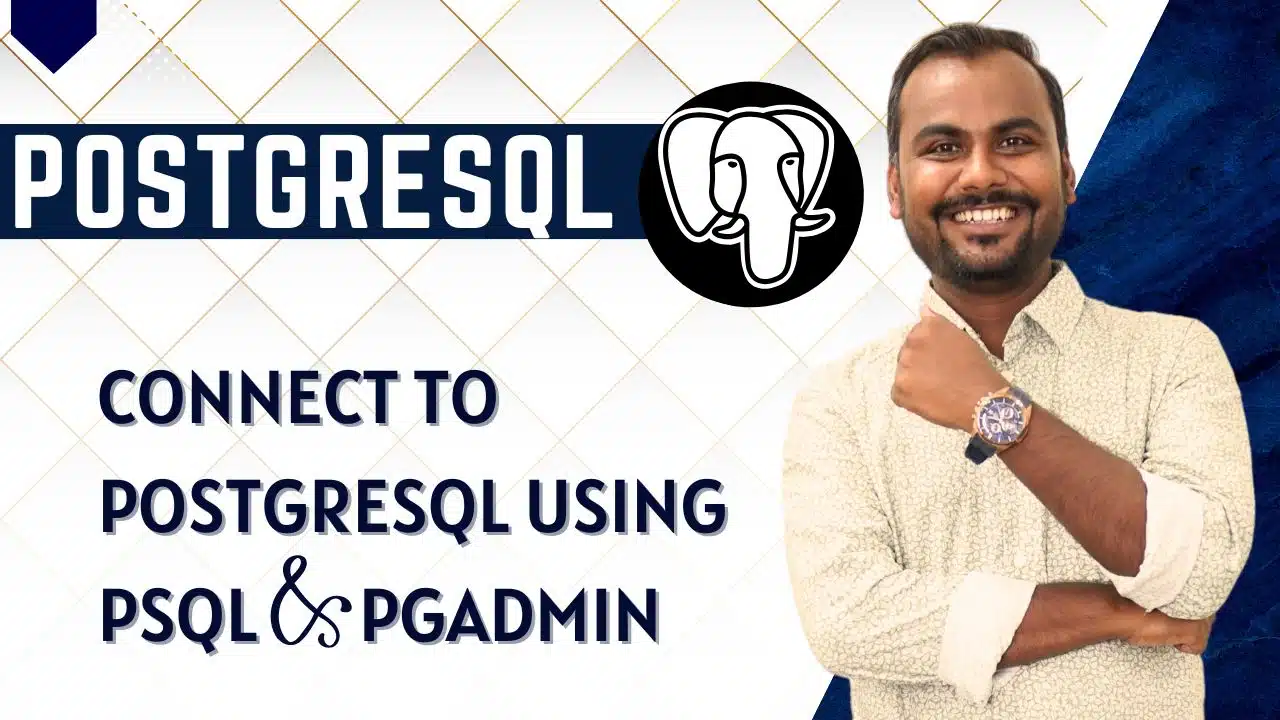Connect to PostgreSQL Using psql and pgAdmin
Introduction
Connecting to a PostgreSQL database is one of the first skills every database administrator (DBA) needs to master. Whether you’re learning through a PostgreSQL DBA online training program or setting up your own environment, understanding both command-line and graphical methods of connection is essential.
In this guide, we’ll walk through how to connect to PostgreSQL using psql (the command-line interface) and pgAdmin (the graphical interface) — two of the most widely used tools for managing PostgreSQL databases.
Connecting with psql (PostgreSQL Command Line Tool)
What is psql?
psql is PostgreSQL’s built-in command-line utility that allows you to interact directly with the database server. It’s ideal for DBAs who prefer scripts, automation, and full control of SQL operations.
Steps to Connect Using psql
-
Open Terminal (Linux/Mac) or Command Prompt (Windows)
Ensure PostgreSQL is installed and added to your system PATH. -
Run the Connection Command:
-
-h: Hostname or IP of the PostgreSQL server (uselocalhostfor local) -
-p: Port number (default is 5432) -
-U: Username -
-d: Database name
-
-
Enter Password:
When prompted, provide the PostgreSQL user’s password. -
Verify Connection:
Once connected, you’ll see the PostgreSQL prompt:You can now run SQL queries directly from the terminal.
💡 Pro Tip: For students learning through PostgreSQL DBA online training, practicing with psql builds strong command-line confidence — a must-have for database automation and troubleshooting.
Connecting with pgAdmin (Graphical User Interface)
What is pgAdmin?
pgAdmin is a popular GUI tool that simplifies PostgreSQL database management. It’s perfect for visual learners and professionals managing multiple databases.
Steps to Connect Using pgAdmin
-
Open pgAdmin and Login
Launch pgAdmin and connect using your master password. -
Register a New Server
-
Right-click on Servers → Create → Server…
-
Under General, give your connection a name (e.g., “Local PostgreSQL”).
-
-
Enter Connection Details:
-
Host name/address:
localhost -
Port:
5432 -
Username:
postgres -
Password: (enter your password and save it if desired)
-
-
Click Save and Connect
Your server will appear in the left-hand tree. Expand it to view databases, schemas, and tables.
🎯 Tip: Learners in PostgreSQL for DBA programs often start with pgAdmin before transitioning to command-line tools like psql for advanced operations.
Troubleshooting Connection Issues
Common problems include:
-
Invalid Password: Verify credentials in the
pg_hba.conffile. -
Server Not Running: Start PostgreSQL service manually (
sudo systemctl start postgresql). -
Firewall or Network Issues: Ensure port
5432is open for remote connections.
To allow remote access, modify postgresql.conf and pg_hba.conf, then restart the service.
Which Method Should You Use?
| Tool | Best For | Skill Level |
|---|---|---|
| psql | Scripting, automation, and quick queries | Intermediate to Advanced |
| pgAdmin | Visual exploration, schema management | Beginner to Intermediate |
Professionals enrolled in PostgreSQL DBA online training should master both methods — psql for flexibility and pgAdmin for convenience.
Conclusion
Mastering PostgreSQL connectivity using both psql and pgAdmin is a fundamental step in your journey toward becoming a proficient DBA.
If you’re enrolled in a PostgreSQL DBA online training course or exploring PostgreSQL for DBA certification, these tools will help you perform everything from database creation to complex performance tuning.
Keep practicing — every connection you make brings you closer to database mastery!
At Learnomate Technologies, we make sure you not only understand such cutting-edge features but also know how to implement them in real-world projects. Whether you’re a beginner looking to break into the database world or an experienced professional upgrading your skillset—we’ve got your back with the most practical, hands-on training in Oracle technologies.








Let’s keep learning, exploring, and growing together. Because staying curious is the first step to staying ahead.
Happy learning!
ANKUSH







